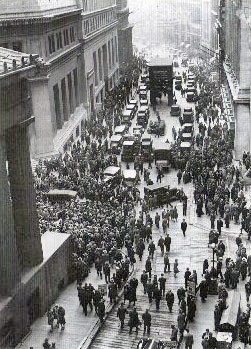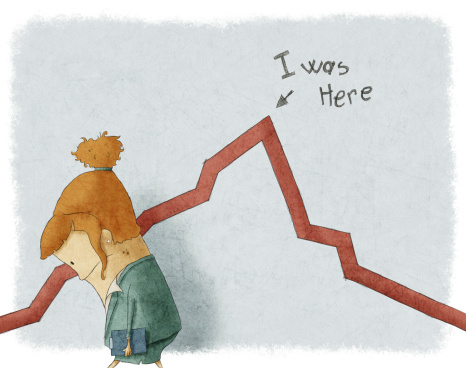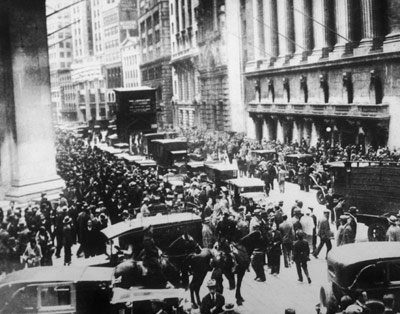 |
| This guy may be thinking “This is the worst day of my life.” |
Do you have a day in your life that stands out? It could be the day you got your driver’s license or the day you got your braces taken off. Most of us remember the best days of our lives… but we also remember the worst. Making a mistake that costs your team the championship is one example. “That was the worst day of my life!” you might say, looking back on it.
October 24th was about to become the worst day of many Americans’ lives in 1929.
While Americans were happy to ignore the panic of March 1929, they didn’t entirely forget about it, either. They were nervous about the same thing happening again, and it was only the continued rise in the value of the stock market that kept them investing after Charles Mitchell loaned the country $25 million. Any serious drop in values would trigger another crash. But would it be a minor panic, or a major crisis?
The answer came on Thursday, October 24, 1929, known as Black Thursday. That’s when stockbrokers began a panicked burst of selling in reaction to quick price drops in some stocks that they had seen on the trading floor the day before. Just as in March, they wanted to sell stocks while they could still get a relatively high price for them, before their value sank too low. And just as in March, when this failed, stockbrokers began to make margin calls on people who owed them money. Unlike March, this time there was no hero to step in to save the stock market from crashing: Even Charles Mitchell couldn’t lend $25 million to the nation twice in one year. The Stock Market Crash of 1929--the biggest one-day loss of value on the U.S. stock exchange up to that point--was on.
Click through this slideshow to learn more about Black Thursday and the events that followed.
October 24, 1929: Black Thursday
There was panic outside on Wall Street as investors and brokers like these tried to get inside the New York Stock Exchange building to sell their stocks before all was lost. Over 16 million stocks were sold, and the U.S. stock market lost nearly one quarter of its entire value on this one day. October 29, 1929: Black Tuesday
The crash continued into the next week. On “Black Tuesday,” October 29th, over 16 million shares of stock were sold. Companies and investors lost over $14 billion in paper value. Many average investors lost everything in the crash. Continuing into November
As the crash continued, so did the panic among investors. In one day, Black Thursday, the stock market had lost one quarter of its value. By November, after complete chaos on the trading floor and in the streets, the U.S. stock market had lost over one third of its value. |
Put the events that combined to create the Stock Market Crash of 1929 in the correct order:
|
The stock market loses one third
of its value. The stock market is slightly unstable.
No one can step in to stabilize the market.
Brokers begin a sell-off.
Investors lose over $14 billion in paper value in one day.
In one day the stock market loses one quarter of its value.
|
1
2
3
4
5
6
|
